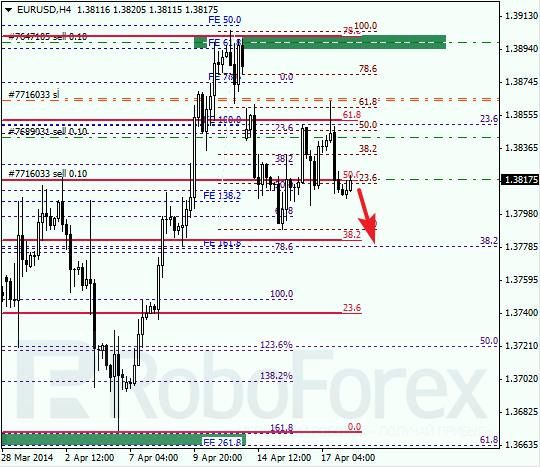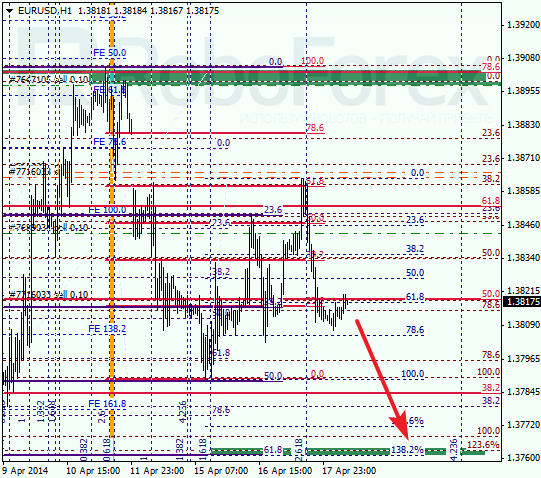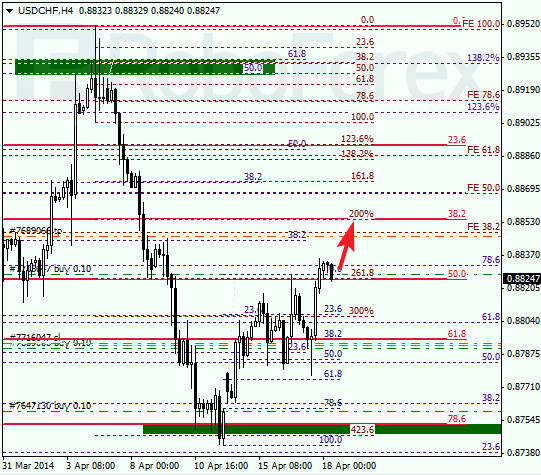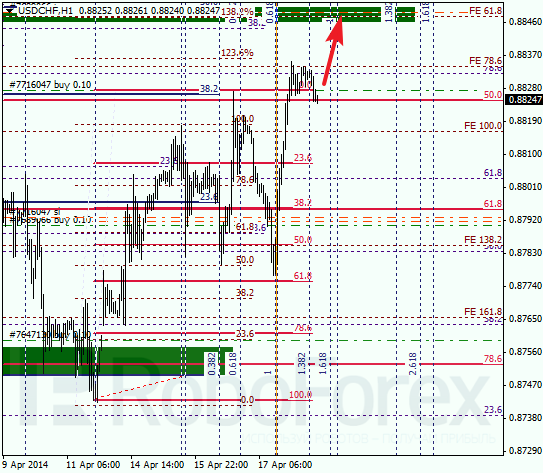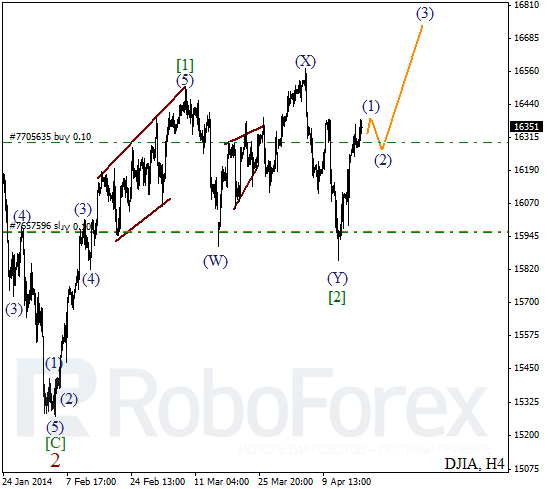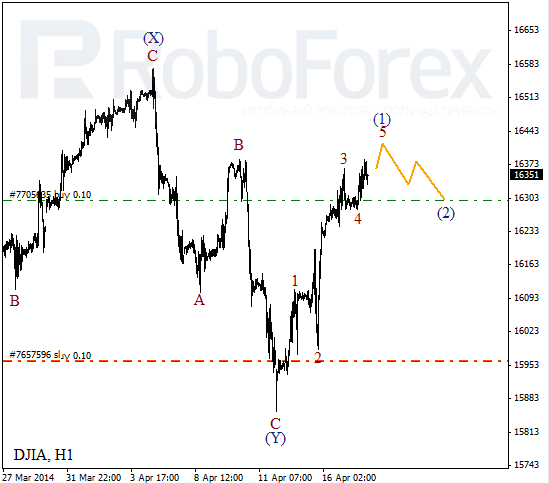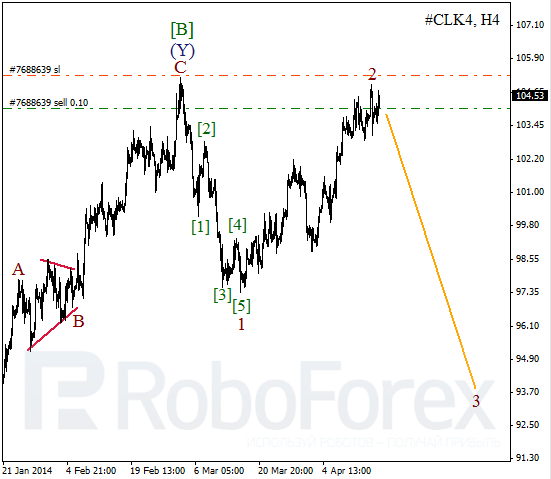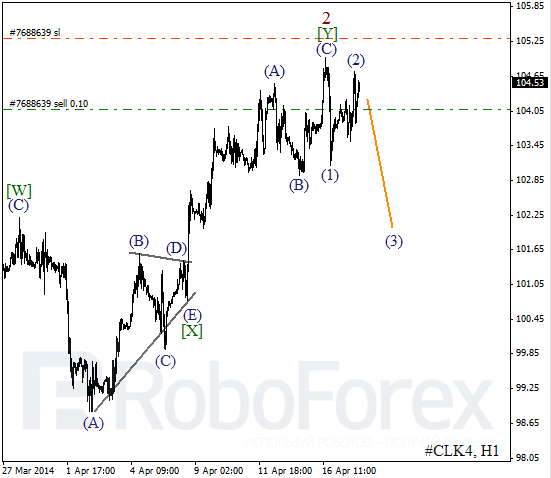Source: Peter Byrne and Tracy Salcedo-Chourré of The Life Sciences Report (4/17/14)
http://www.thelifesciencesreport.com/pub/na/build-biotech-wealth-on-solid-platforms-grant-zeng
Potential. That’s what every investor is looking for in a biotech investment. Grant Zeng of Zacks Small-Cap Research zeroes in on three primary factors when he looks at whether a particular company has the potential to succeed in the fast-moving life sciences industry. In this interview with The Life Sciences Report, Zeng dissects his process and names 10 companies that have survived his exacting examination.
The Life Sciences Report: As an analyst you focus on promising junior biotechs. What primary qualities do you look for in a company that you rate hold or outperform? And what do you think makes a junior biotech attractive to someone who might want to acquire it?
Grant Zeng: As an analyst with Zacks Small-Cap Research, I’m focused on finding undervalued or underfollowed small-cap biotech companies. My analysis is based on the individual company’s fundamentals, which involves a comprehensive analysis of the company, the industry and also the broad market. That analysis includes, but is not limited to, looking at the company’s operations, pipeline, the market potential of its products and its financials.
First, I look at the technology. It’s critical that the company has a platform technology, because that enables the creation of products and processes that support present or future development. If a biotech owns a platform technology, it is much easier to build a robust pipeline in a cost-effective way, and save time.
Second, I look at the company’s pipeline. Generally speaking, a diversified, robust pipeline, with multiple product candidates in various stages of development, is more valuable than a single-product pipeline. Of course, I also look at each individual drug candidate, its targeted population and its market potential.
Third, I look at the company’s balance sheet. Cash burn is always a concern for a small-cap biotech. A strong balance sheet allows a company to focus on its long-term growth without considering short-term cash strains. On the other side, if a company has a weak balance sheet and a high cash-burn rate, valuation will be under pressure, since equity financing always dilutes the existing shareholder base. If a biotech company has all three—or at least one or two—of these characteristics, it could be a potential outperform name.
Having said that, investors are always interested in a company’s acquisition potential. But it’s difficult to predict whether an individual company is attractive to a potential acquirer. When a bigger company looks for a target, the most important thing is the target’s technology and pipeline. A platform technology and a diversified, robust pipeline are always attractive to a potential acquirer. Valuation is also a concern.
TLSR: How about therapy areas? Do you look at the markets for the particular drugs that a company’s developing?
GZ: Yes. We certainly look at the markets of the targets. Sometimes we also look at the unmet medical needs for the pipeline.
TLSR: Are you attracted to companies developing orphan drugs?
GZ: Yes. This is a very lucrative area and has unmet medical needs to target.
TLSR: Do these features make a biotech attractive to a company interested in doing a merger and acquisition (M&A)?
GZ: Yes, always. Mergers and acquisitions have been booming in the biotech and biopharmaceutical industry because large biotechs and large pharmaceutical companies are looking for small biotechs that have strong pipelines or strong product candidates. This is always a very exciting area for investors.
In addition to M&A, licensing and partnerships remain the lifeline of the biotech industry. As I’ve said before, I expect to see continued partnership and licensing activities for biotech companies in the coming years. I also expect further consolidation throughout the industry. The big pharmaceutical companies have long faced big challenges, such as patent expiration for blockbusters, low research and development (R&D) productivity and generic competition. Platform technologies and efficient R&D efforts in smaller biotech companies may be part of the solution to the challenges faced by big pharma. As long as those challenges exist, the buyout of smaller biotechs by big pharma/biotech companies will continue to make sense. Investors should pay attention to large, profitable biotechnology stocks, as well as small-cap biotechnology stocks with promising pipelines.
TLSR: Is 2014 shaping up to be better or worse than 2013 for investors in the life science sector?
GZ: Biotech investors had a terrific year in 2013. We saw the NASDAQ Biotechnology Index gain 66%. In 2014 I think the trend will continue, but it may not be as terrific as in 2013.
TLSR: It’s been a rollercoaster ride for the past 3 or 4 weeks. Biotechs have lost ground. Can you comment on this volatility?
GZ: I think the biotech industry has undergone a correction in the past 3 weeks. There are companies that had corrections of about 50%. This may be good for the healthy development of the market. After a terrific year of 2013, some companies actually are overvalued, but there are still companies that are undervalued or fairly valued. After the correction, the biotech sector will take a step forward again.
A number of strong secular growth drivers still power the biotech industry—namely an aging population, and an enormous R&D effort to bring new, better drugs to market. Recent breakthroughs in oncology, neurology and cardiology offer sizable market opportunities. Biotechnology research is finally starting to deliver. Expanded work in genomics and proteomics (the study of proteins) is attracting significant attention from larger players. Demand for innovative medicines remains strong, and as biotechnology delivers the next wave of pharmaceutical products, the group should continue to outperform the broader sector.
TLSR: How about the Technical Component (TC) Grandfather Clause expiration (the clause permitted labs providing pathology services performed at hospitals to receive direct payment from Medicare)? Is that something you feel has affected the industry?
GZ: That kind of event has had some negative impact on the molecular diagnostic industry. For example, I cover NeoGenomics Laboratories (NEO:NASDAQ). As I’ve written previously, effective July 1, 2012, NeoGenomics was required to bill hospitals for the technical component of certain tests performed on behalf of Medicare inpatients and outpatients. Previously, the company was allowed to bill Medicare directly for such services, if the services were provided to hospitals that were “grandfathered” under the regulations.
As I’ve noted before, about 80% of NeoGenomics’ lab tests are billed off the physician fee schedule, with the remainder billed off the clinical lab fee schedule. Lab tests billed off the physician fee schedule usually have two separable billing components: the technical component (sample treatment and testing), and the professional component (interpretation of the test results).
The company was impacted by the TC clause expiration, but will move forward with new clients, new development and tests. The expiration won’t have a long-lasting impact.
TLSR: Did you want to talk a little about NeoGenomics? Why might investors be interested in this company now?
GZ: I have been following NeoGenomics since October 2011. This is a molecular diagnostic company providing molecular testing for cancer patients. The company grew revenue from $11.5 million ($11.5M) in 2007 to $66.5M in 2013, a 34% annual compound growth rate to date. The revenue will continue to grow to $145M in fiscal 2017, according to my model. NeoGenomics is focused on the cancer-testing niche market, a huge market. There is great potential for the company to grow in the future.
TLSR: Do you cover other companies working in the same arena?
GZ: Yes. In addition to NeoGenomics, I cover two other biotech companies in the molecular diagnostic business: GeneNews (GNWSF:OTCPK; GEN:TSX) and Rosetta Genomics Ltd. (ROSG:NASDAQ)).
GeneNews is marketing two products in the U.S. One is called ColonSentry, for the early detection of colon cancer, and the other is EarlyCDT-Lung, for the early detection of lung cancer. The company has a joint venture in the U.S., and is promoting these two products in the U.S. and around the world. I see total revenue for GeneNews growing at an impressive 173% compound annual growth rate from fiscal 2013 to 2018, and model that the company will break even in fiscal 2017. I have a price target of $3/share for GeneNews.
Rosetta Genomics has four products on the market: a cancer origin test, a lung cancer test, a kidney cancer test and a mesothelioma test. The current focus is on the cancer origin test, which identifies the primary origin of tumors. The tests generate revenue for Rosetta.
I am optimistic about the company’s microRNA platform technologies, which serve as the basis for continued development of molecular diagnostics. Shares are undervalued at this time. I have a price target of $10.50/share.
TLSR: Do you think there is a growing market for these kinds of molecular diagnostics?
GZ: Yes. In general, the molecular diagnostic market is growing very rapidly in the U.S. and around the world. These small companies are catching an opportunity to grow their businesses individually by targeting this very large market with their proprietary technology.
TLSR: Are there any nicely performing firms working with RNA interference (RNAi)? Can you describe innovative products that are in the pipeline or already on the market?
GZ: RNAi is a very exciting area for both therapeutics and diagnostics. I cover two companies engaged in RNAi therapeutics. One is Arrowhead Research Corp. (ARWR:NASDAQ) and the other is Bio-Path Holdings Inc.(BPTH:NASDAQ).
Arrowhead is a clinical-stage biotech with a candidate, ARC-520, targeting hepatitis B virus (HBV). Hepatitis B is a huge market around the world. The market in the U.S. may not be that big, but it’s very large in Europe and in Asia. The company just initiated a Phase 2 study in Hong Kong; the data from that trial will be available later this year. The company will also be able to apply its RNA interference technology to develop a robust and a diversified portfolio once it has verified the safety and efficacy of ARC-520 for HBV.
Bio-Path is another small-cap biotech company engaged in the RNA space, but not in RNA interference. The focus is on antisense. Its liposomal technology enables systemic delivery of antisense, small interfering RNA (siRNA) and hydrophobic small molecules for treatment of cancer. Bio-Path is currently testing its liposomal Grb-2 candidate in a Phase 1 trial in blood cancers. The trial will be finished in the first half of this year, and the company plans to move this candidate into a Phase 2 clinical trial later this year.
This is also a platform technology. Once the efficacy and the safety of the therapy are verified in the Phase 1 trial, the company can develop other candidates based on the same platform technology.
Bio-Path’s pipeline also includes liposomal Bcl-2, a liposome-delivered antisense cancer drug that targets the lymphoma and certain solid tumor markets, which could enter clinical trials in 2014.
For both Arrowhead and Bio-Path, I like their respective platform technologies, which have the potential to build up diversified and robust pipelines in a cost-effective way in a short period of time, once the proof-of-concept clinical evidence has been verified. Shares of both companies have had significant runs in 2013 and I believe there is room for further appreciation for the shares of both companies.
TLSR: Let’s move on to cancer supportive care. You have companies that you cover in this space?
GZ: I cover Soligenix Inc. (SNGX:OTCBB), which is focused on cancer supportive care, gastrointestinal disorders and biodefense. The company has a neat candidate, SGX942, which targets the treatment of oral mucositis, a terrible condition affecting some cancer patients. Most treatment options address the symptoms of mucositis and do not address the cause, while Soligenix’s SGX942 has a new mechanism of action, an innate defense regulator, that can address both the primary and the secondary causes. The company is testing the product in a Phase 2 clinical trial for oral mucositis in patients undergoing chemotherapy or radiation therapy. Oral mucositis is a huge market for this candidate.
TLSR: When might investors see catalysts or data readouts?
GZ: The company initiated a Phase 2 trial in December 2013. The trial is going very well. The results will be available in the second half of this year. Once the product’s safety and efficacy are verified in the clinic, Soligenix can use the platform to develop other product candidates addressing other indications.
Soligenix has a very diversified pipeline under development, including biodefense candidates—vaccines for bioterrorism—using its ThermoVax technology. In addition, Soligenix is developing oral BDP (beclomethasone 17,21-dipropionate) for a variety of indications, most notably in pediatric Crohn’s disease. The company will initiate a Phase 2 study in the second half of this year, I believe.
TLSR: Let’s move on again to checkpoint inhibitors. Are there penny stocks in that realm that catch your eye?
GZ: Checkpoint inhibitors are very promising new therapeutics under development for cancers. Key players are competing in this potentially high-profit market. In terms of small biotech companies under my coverage, I follow OncoSec Medical Inc. (ONCS:OTCBB), an emerging biotech focused on designing and developing its proprietary medical approach for the treatment of solid tumors.
The company has a platform candidate called the OncoSec Medical System. Basically, the company uses electroporation technology to deliver DNA-encoded cytokines or other immunomodulatory molecules directly into tumor cells. Once in the tumor cells the therapy can stimulate the patient’s immune system to fight cancer.
OncoSec has a Phase 2 trial ongoing for its lead candidate, ImmunoPulse, in melanoma. ImmunoPulse delivers plasmid DNA-encoding immunotherapeutic cytokine interleukin 12 into tumor cells, stimulating a patient’s immune system to fight cancer, and has demonstrated an impressive safety and efficacy profile in the trial. The company plans to initiate a pivotal trial in 2015. I estimate approval of ImmunoPulse for the treatment of melanoma may come in late 2017, if the pivotal trial data prove to be positive.
ImmunoPulse may also be used in combination with checkpoint inhibitors. This is a very promising area for the company. Right now, OncoSec is collaborating with Old Dominion University to evaluate the effects of the ImmunoPulse in combination with checkpoint inhibitors in melanoma. The company is going to move into Phase 1 trials very soon, I think. This is a very promising area because the combination technology is transforming the non-immunogenic tumors into immunogenic tumors. The combination can kill the tumor cells with increased efficacy.
As I have written, ImmunoPulse’s potential to convert the non- or weakly immune-responsive cancer into strongly immune-responsive cancer may represent a paradigm shift in cancer therapy. This area is an enormous unmet medical need and represents a huge market for OncoSec.
TLSR: Are you following another company in this field?
GZ: Another company engaged in combination therapy is Advaxis Inc. (ADXS:OTCBB). This company has a collaborative relationship with Georgia Regents University, and is going to initiate a combination study of its ADXS-HPV immunotherapy and the PD-1 (programmed cell death-1) antibody in patients with recurrent or refractory cervical cancer. The company is attacking several cancers with its immunotherapy combined checkpoint inhibitors.
Advaxis uses an immunotherapy technology based on its bacterial platform. The platform can be used to stimulate the patient’s own immune system. By using immunotherapy in combination with a checkpoint inhibitor, efficacy will be increased and side effects may be reduced.
TLSR: How about treatments for brain cancer? Have you got any companies under coverage for that indication?
GZ: DelMar Pharmaceuticals Inc. (DMPI:OTCQB) is focused on brain cancer therapy. The company has a candidate called VAL-083; it is in clinical trials already. This is a first-in-class small-molecule chemotherapeutic.
The target is glioblastoma multiforme (GBM), the most common, most aggressive type of primary brain tumor. GBM accounts for about 50% of primary brain cancers. The median survival time from the time of diagnosis, without treatment, is typically less than a year.
Historically, VAL-083 has been tested in clinical trials by the National Cancer Institute (NCI), where it demonstrated strong efficacy and safety for the treatment of brain cancer. However, as I have written, further research was not pursued in the United States due to an increased focus by the NCI on targeted therapies during the era.
I’ve also written that DelMar has a broad portfolio of new patent applications to protect its intellectual property, and that patent applications claim compositions and methods related to the use of VAL-083, related and next-generation compounds, as well as methods of synthesis and quality controls for the manufacturing process of VAL-083.
DelMar initiated Phase 1/2 clinical trials in late 2011 with VAL-083 targeting GBM. The company also presented a positive interim data from the trial at the 18th Annual Society for NeuroOncology meeting in November 2013.
The interim data are very positive, the safety is excellent and the efficacy is very strong. I expect the company will move forward into a pivotal Phase 2 trial in H1/14. I expect DelMar to increase the dose because of the strong safety profile of the compound. This is a significant milestone for the company, which will position it in late-stage development.
TLSR: When might we see a catalyst involved with that pivotal Phase 2?
GZ: DelMar recently presented updated data from the Phase 1/2 trial at the American Association of Cancer Research annual meeting. The company stated that the VAL-083 therapy is well tolerated to date; dose-limiting toxicity has not been reached after fifth cohort. The company also confirmed that sixth cohort is fully enrolled.
I also believe it is possible that the U.S. Food and Drug Administration (FDA) may grant fast-track, accelerated approval status to VAL-083, which would enable DelMar to begin filing for commercial approval during the clinical trial process. I have an Outperform rating on DelMar shares and a 12-month price target of $4.50/share.
VAL-083 has been approved in China for leukemia and lung cancer and DelMar has acquired its commercial rights in the China market. The company is also seeking a marketing partnership that could generate fees, milestones and royalty revenue, which is a derisking event.
TLSR: Are there any other companies with innovative technologies that you think investors might be interested in?
GZ: I’d like to mention a very small company in a very specific area. GeoVax Labs, Inc. (GOVX:OTC) is engaged in developing both therapeutic and preventative vaccines for HIV/AIDS. The company has candidates in clinical trials, and has already presented interim data—positive data—for both the preventive vaccines and the therapeutic vaccine.
The company has a specific and proprietary platform technology. As I have written, GeoVax’s preventive HIV vaccine is among only five candidates, out of more than 90 vaccines entering HI Vaccine Trials Network Phase 1 testing, chosen to progress to Phase 2 clinical trials. The company’s preventive vaccine is the only HIV vaccine for America/Europe entering an efficacy trial. Safety is good and efficacy is strong at this point.
Entering 2014, GeoVax plans to initiate a second Phase 1 trial with its second-generation therapeutic vaccine, and should enter a Phase 2 trial with its preventive vaccine in 2015. Those would be the next catalysts. I have an Outperform rating on GeoVax and a price target of $1.50/share.
TLSR: Are there any other developments in life sciences that you think might be of interest to a small-cap investor?
GZ: Again, in general, I’m positive on the biotech industry, especially for small-cap biotech companies with platform technologies, strong pipelines and strong balance sheets. In the next few years. I also believe more products will be approved by the FDA in general.
When it comes to biotech investing, I always remind investors to do their own research, to diversify their portfolios. I also advise investors to keep a look out for the catalysts for small-cap companies.
Investors also need to look at a company’s balance sheet, because development-stage biotech companies always need cash to advance their clinical programs. If a company doesn’t have much cash sitting on its balance sheet, it may need to raise new funds in the future. Equity financing will always dilute the existing shareholder base and also reduce the share price.
TLSR: Good advice. Thank you very much.
GZ: Thank you.
Grant Zeng has more than 10 years’ professional experience in equity research and analysis. He is currently a senior biotech analyst with Zacks Investment Research Inc., and has been with Zacks since March 2006. Before joining Zacks, Zeng worked for TheStreet.com as a biotech analyst from 2005–2006. From September 2001 to December 2003, Zeng worked for China Pacific Insurance Co. as an equity/fund analyst. Zeng was a healthcare equity analyst with Young & Partners LLC from August 2000 to September 2001. Zeng also has teaching and research experience in pharmaceutical science. Zeng obtained his master’s degree in business administration with a major in finance in 2000 from McMaster University, Canada. He also holds a master’s degree in biochemistry from the University of Western Ontario, and earned a master’s degree in pharmacology and a bachelor’s degree in medicine from Second Military Medical University in China. Zeng is a Chartered Financial Analyst (CFA).
Want to read more Life Sciences Report interviews like this? Sign up for our free e-newsletter, and you’ll learn when new articles have been published. To see recent interviews with industry analysts and commentators, visit our Streetwise Interviews page.
DISCLOSURE:
1) Peter Byrne and Tracy Salcedo-Chourre conducted this interview for Streetwise Reports LLC, publisher of The Gold Report, The Energy Report, The Life Sciences Report and The Mining Report, and provides services toStreetwise Reports as an independent contractor [as an employee]. Tracy owns, or her family owns, shares of the following companies mentioned in this interview: None. Peter owns, or his family owns, shares of the following companies mentioned in this interview: None.
2) The following companies mentioned in the interview are sponsors of Streetwise Reports: DelMar Pharmaceuticals Inc., Soligenix Inc., NeoGenomics Laboratories. Streetwise Reports does not accept stock in exchange for its services.
3) Grant Zeng: I own, or my family owns, shares of the following companies mentioned in this interview: None. I personally am, or my family is, paid by the following companies mentioned in this interview: None. My company has a financial relationship with the following companies mentioned in this interview: None. Read the Zack Small-Cap Research disclaimer. I was not paid by Streetwise Reports for participating in this interview. Comments and opinions expressed are my own comments and opinions. I had the opportunity to review the interview for accuracy as of the date of the interview and am responsible for the content of the interview.
4) Interviews are edited for clarity. Streetwise Reports does not make editorial comments or change experts’ statements without their consent.
5) The interview does not constitute investment advice. Each reader is encouraged to consult with his or her individual financial professional and any action a reader takes as a result of information presented here is his or her own responsibility. By opening this page, each reader accepts and agrees to Streetwise Reports’ terms of use and full legal disclaimer.
6) From time to time, Streetwise Reports LLC and its directors, officers, employees or members of their families, as well as persons interviewed for articles and interviews on the site, may have a long or short position in securities mentioned. Directors, officers, employees or members of their families are prohibited from making purchases and/or sales of those securities in the open market or otherwise during the up-to-four-week interval from the time of the interview until after it publishes.
Streetwise – The Life Sciences Report is Copyright © 2014 by Streetwise Reports LLC. All rights are reserved. Streetwise Reports LLC hereby grants an unrestricted license to use or disseminate this copyrighted material (i) only in whole (and always including this disclaimer), but (ii) never in part..
Streetwise Reports LLC does not guarantee the accuracy or thoroughness of the information reported.
Streetwise Reports LLC receives a fee from companies that are listed on the home page in the In This Issue section. Their sponsor pages may be considered advertising for the purposes of 18 U.S.C. 1734.
Participating companies provide the logos used in The Life Sciences Report. These logos are trademarks and are the property of the individual companies.
101 Second St., Suite 110
Petaluma, CA 94952
Tel.: (707) 981-8204
Fax: (707) 981-8998
Email: [email protected]
